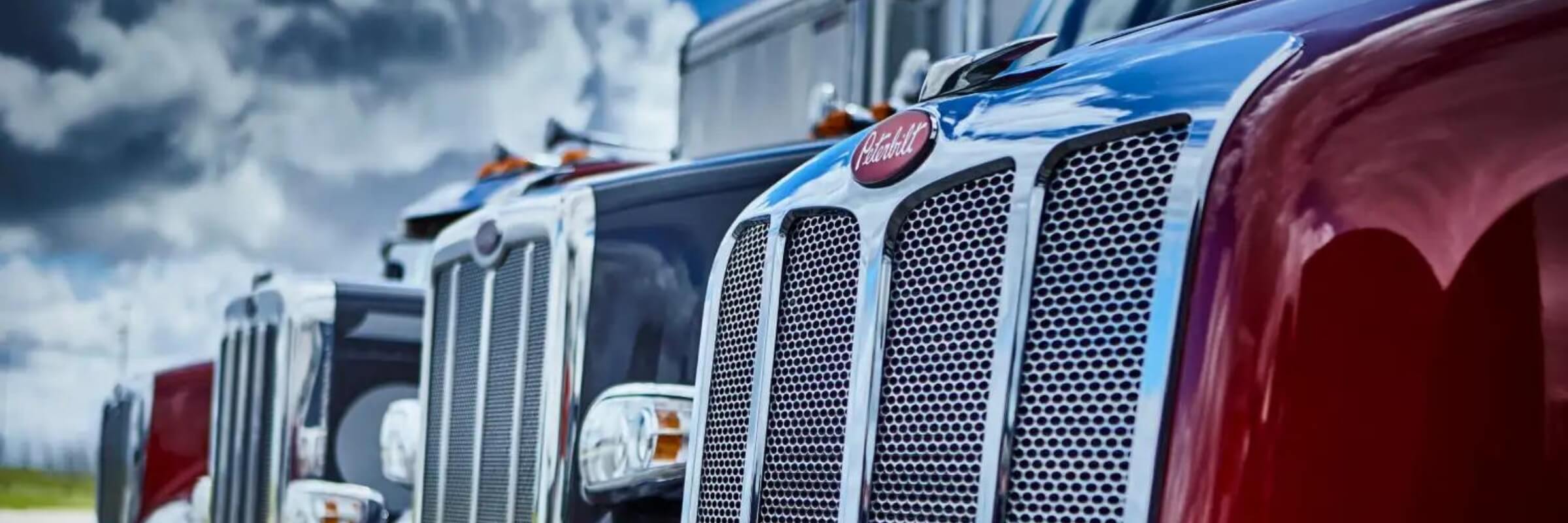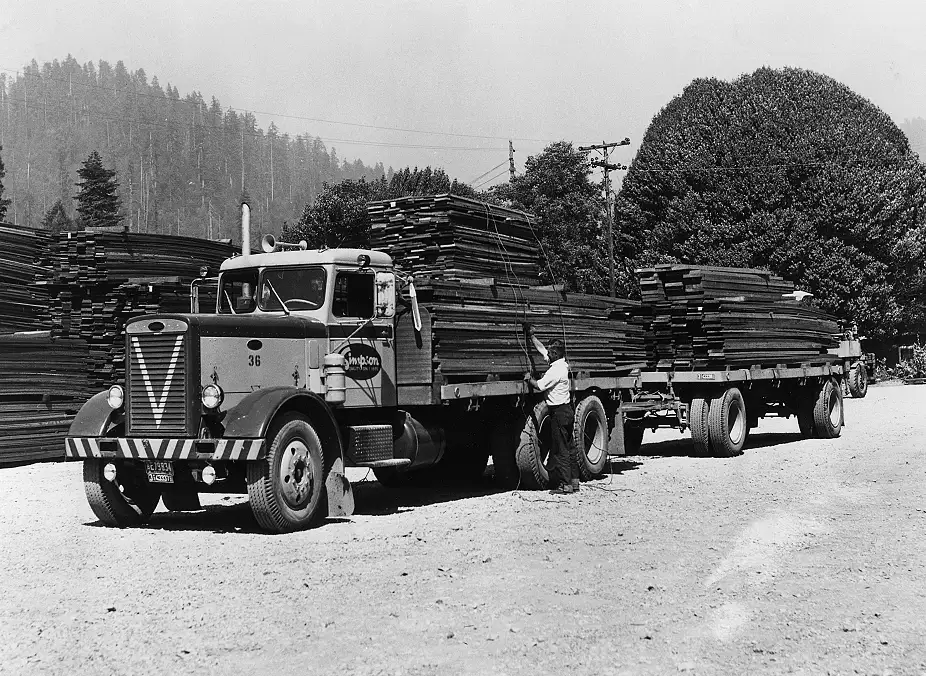Key Takeaways
- Founded in 1939 by Al Peterman after acquiring Fageol Motors, Peterbilt evolved from modified logging trucks to a leader in heavy-duty, medium-duty, and vocational trucks, consistently incorporating driver feedback and new technologies.
- Over the decades, Peterbilt expanded manufacturing across the U.S. and Canada, introduced iconic models like the 359, 379, 389, and modern aerodynamic trucks like the 579 and 587. Peterbilt continually updated its lineup to meet industry demands, including vocational, highway, and medium-duty trucks.
- Peterbilt has embraced fuel efficiency, hybrid and electric models, compressed natural gas options, and modern aerodynamics, exemplified by the production of its electric trucks (579EV, 520EV, 220EV) and the launch of the Model 589 with improved aerodynamics and optimized fuel efficiency.
Peterbilt has been an undisputed leader in the heavy-duty trucking industry for more than 80 years. Since 1939, Peterbilt has purposefully crafted each and every truck in its lineup, constantly evolving and improving to produce the highest quality on-highway tractors, vocational and medium-duty work trucks available.
We took a deep dive into the history of the Peterbilt brand, from its logging industry roots in California to its current manufacturing powerhouse in Denton, Texas.
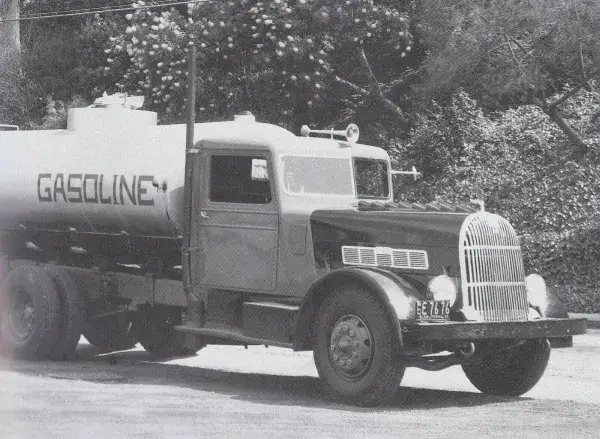
Fageol Roots
Peterbilt’s roots can be traced back to Fageol Motors, a California truck, bus and car manufacturer founded in 1916. Fageol Motors was a pioneer in the heavy-duty trucking industry, building sturdy, well-built trucks with dual-range, mid-mounted transmissions capable of slow-speed heavy hauling and highway speeds with lighter loads.
In 1937, Fageol introduced a new style of highway tractor with an aerodynamic cab, V-shaped windshield, aluminum grill and headlamps placed between the fenders and hood — elements that would become the hallmark of future Peterbilt trucks.
The Founding of Peterbilt
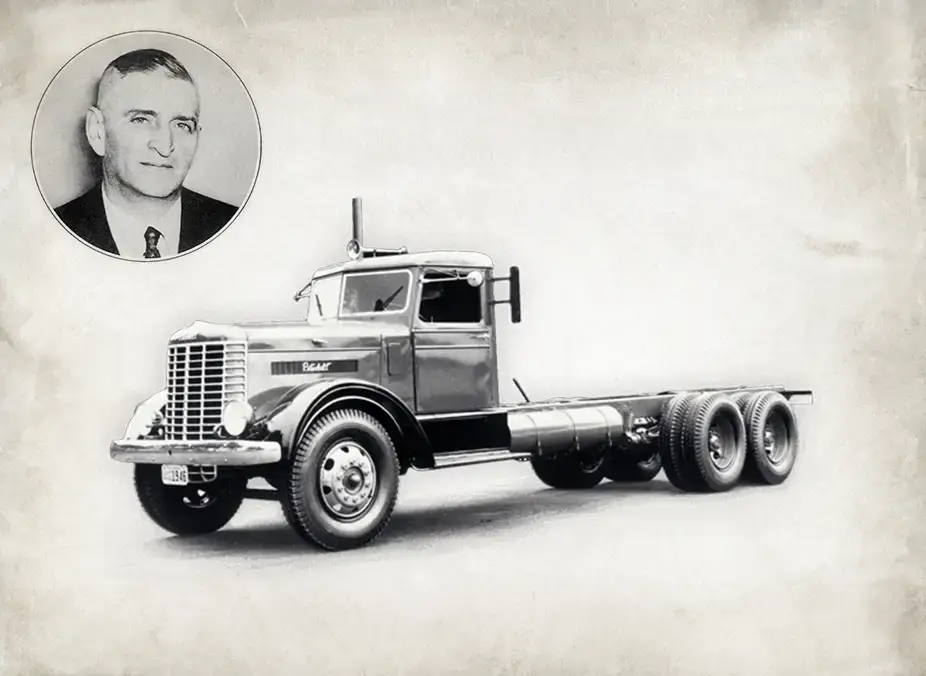
T.A. (Al) Peterman was a lumberman and door manufacturer who was searching for a way to transport his timber from his land in Morton, Washington, to his plywood mills and door manufacturing plant in Tacoma.
In the early 1930s, most logs were transported via railroad, but Peterman decided trucks would be quicker and more efficient. He built roads and acquired a fleet of 15 surplus Army trucks from White Motor Company in 1934 that he modified to serve as logging trucks that could navigate the terrain of the Pacific Northwest. The hand cranks were replaced with electric starters, solid tires were swapped out for pneumatics and the brakes were converted to air.
In 1938, Peterman learned that Fageol was being sold and took the opportunity to purchase the company to expand his vehicle production capabilities. The purchase was completed in 1939, with Peterman paying $50,000 for the 13.5-acre Fageol plant in Oakland, California, as well as its tooling and parts inventory. By the end of the year, the newly founded Peterbilt Motors Company had produced 16 vehicles.
How did Peterbilt get its name? Some say the name “Peterbilt” came from a line of wood doors produced by one of Al Peterman’s manufacturing facilities as a nod to the plywood interiors that lined early “Petes.” However, other sources suggest that Fageol trucks were nicknamed “Bill-Bilt” as an homage to Fageol president W.H. Bill. When Peterman purchased the company, he changed the name to Peterbilt and the rest was history.
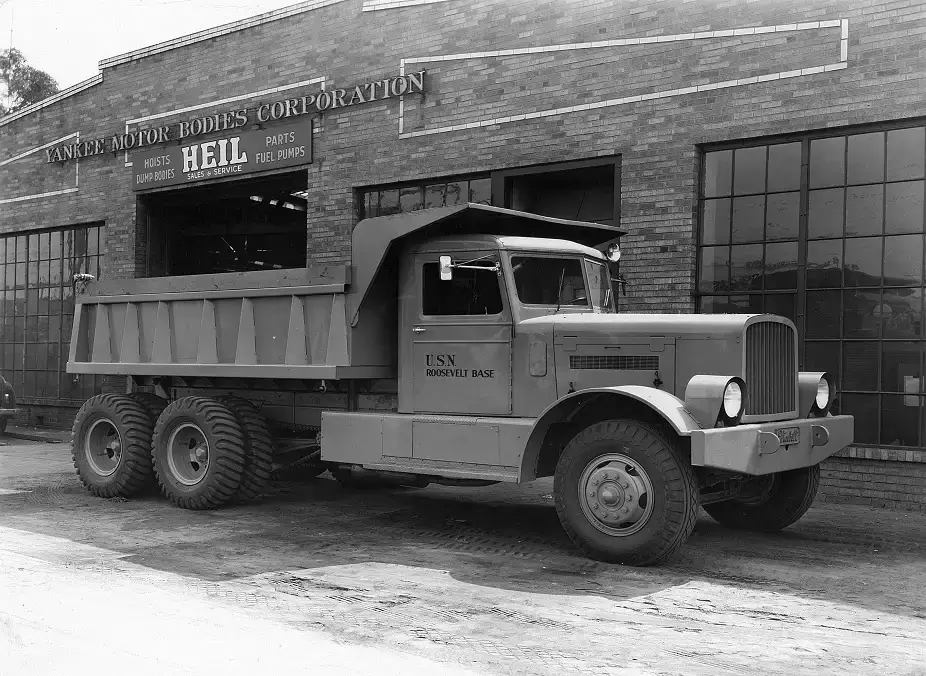 Early Peterbilts and Their Role in World War II
Early Peterbilts and Their Role in World War II
Before manufacturing the first Peterbilt trucks, Peterman and his engineers asked truck owners and drivers what they needed and expected out of a new truck design. Their feedback set the stage for the distinctive styling that Peterbilt would become known for as the engineers made modifications to Fageol trucks to turn them into the earliest Peterbilts.
In April 1939, Peterbilt released its first two vehicles, the single-axle, chain-drive Model 260, and the tandem-axle, shaft-drive Model 334. Both trucks were available with either gasoline or diesel engines and were outfitted with all-steel cabs and plywood paneling from Peterman’s own mills. In its second year, Peterbilt increased production to 83 vehicles and continued to supplement its revenue by servicing and refurbishing trucks from all manufacturers.
In 1941, the heavier-duty Model 364 was introduced. Initially developed for the logging industry, it was quickly repurposed for military use in World War II. By 1944, Peterbilt had secured a contract to supply 224 trucks for the military, and the Model 364 had become known as a dependable workhorse for the war effort.
Unfortunately, Peterman only got to see the success of Peterbilt for a few short years before passing away in 1944. In 1947, his wife sold the company to a group of seven company managers for $450,000 but retained the ownership of the land the factory was built on.
Fun Fact: The first-ever Peterbilt truck was a fire truck chassis built for the city of Centerville (now Fremont), California.
Post-World War II Advancements
The company resumed production of civilian vehicles in 1945 at the end of World War II, upping overall production to 324 units and introducing aluminum components for the first time to reduce truck weight and increase payload capacity.
In 1949, Peterbilt replaced the Model 260 and Model 334 with the Model 280 and Model 350, available either as a conventional cab or cab-over-engine (COE). The “Iron Nose” conventional Model 280 and Model 350 had tall, narrow grilles, vertical grille shutters and separate fenders. The first mass-produced COE by Peterbilt, the “Bubble Nose” Model 280 COE and Model 350 COE, relocated the cab above the front axle to allow for longer trailers, while remaining within new highway length limits.
Fun Fact: Until 1979, Peterbilt would designate single rear-axle trucks with model numbers starting with 2, while tandem rear-axle trucks had model numbers starting with 3.
1950s: A New Era for Peterbilt
In 1953, Peterbilt introduced a new brand emblem, switching from a rectangular border to the current red oval logo we know today.
In 1954, the Model 280 and Model 350 were redesigned and relaunched as the Model 281 and Model 351. The new conventional models featured horizontal grille shutters, and the COE models featured a larger, wider cab design, sharing only the doors with the conventionals. The Model 341 was also introduced in 1954 as a shorter hood version of the Model 351 intended for vocational applications. The Model 281 and Model 351 COEs were again upgraded in 1959 to the Model 282 and Model 352, featuring new quad headlamps and a newly introduced 90-degree tilt hood that allowed for better access to the engine.
Fun Fact: Following its introduction in 1954, the Model 351 had the longest production run in Peterbilt history with production continuing until 1976.
A new era for Peterbilt began in 1958 when Ida Peterman announced plans to sell the property the Peterbilt factory occupied to build a shopping center. Instead of building a new facility, the owners chose to sell Peterbilt Motors Company in June 1958 to Pacific Car and Foundry, a Seattle-based company that would later rebrand as PACCAR.
In 1959, Pacific Car and Foundry began the relocation of Peterbilt and commenced construction on a new 176,000-square-foot facility in Newark, California.
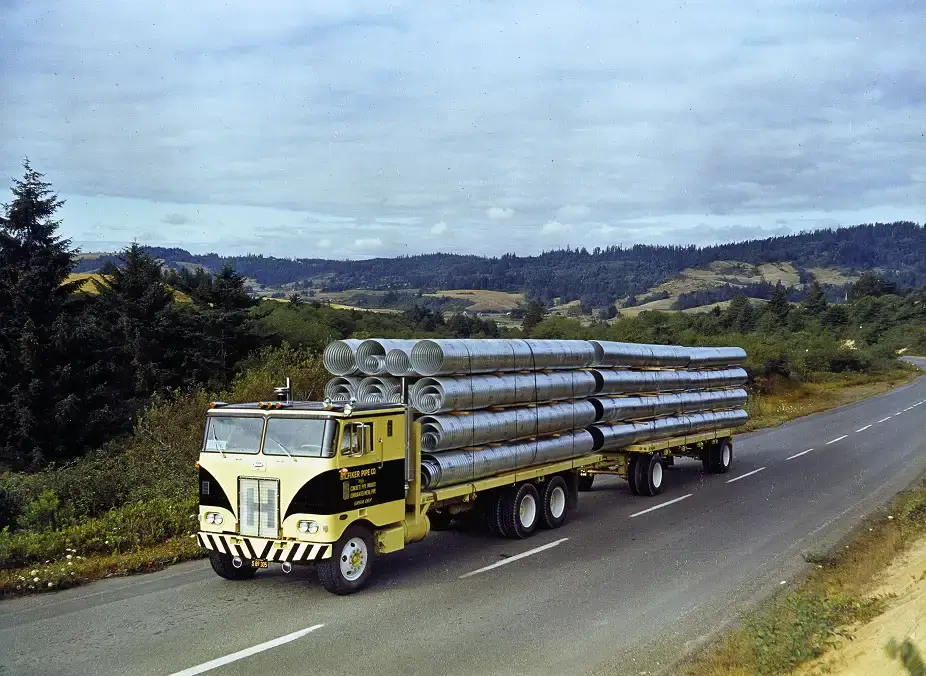
1960s: A Period of Innovation
In 1960, Peterbilt assembled its first trucks at its new facility in Newark and increased production to 800 units. In the same year, Peterbilt debuted a new lightweight aluminum “UniLite” cab for the Model 282 and Model 352 with larger windows and an all-new instrument panel.
Introduced in 1965, the Model 288 and Model 358 became the first conventional Peterbilts with 90-degree tilting hoods. In an effort to expand its model line outside of highway tractors, Peterbilt launched the 6x6 Model 383 designed for off-road construction use in 1966. And in 1967, the classic Model 359 hit the highway along with the single rear-axle Model 289, both featuring a larger grille to accommodate larger diesel engines.
Fun Fact: The Model 358 was the first Peterbilt truck to wear the bird hood ornament that’s still featured on Peterbilt trucks produced today.
To expand its production capabilities and better serve its customers on the East Coast, Peterbilt opened a new facility in Madison, Tennessee, in 1969.
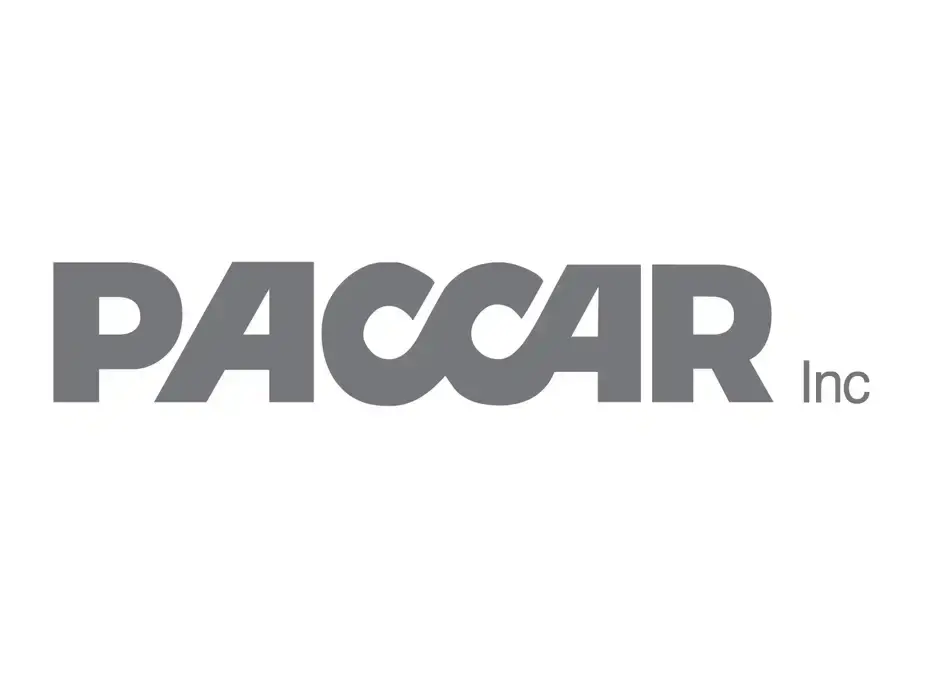
1970s: Vast Expansion
Peterbilt added a number of new models and varieties in the 1970s, making as many as 17 different models at one time. 1970 saw the introduction of the Model 348, a heavy-duty vocational truck designed for cement mixers and dump trucks, and the first Peterbilt truck to feature an angled fiberglass hood.
In 1972, Pacific Car and Foundry officially rebranded as PACCAR and Peterbilt redesigned its conventional cabs, replacing the “UniLite” cab with a new “1100-Series” cab named for its 1,100 square inches of windshield glass. Peterbilt also unveiled the Model 346 in the same year, a 6x6 truck with a set-back front axle designed for off-road construction.
The Model 353 was added to the lineup in 1973 as a construction-oriented variant of the Model 359, eventually replacing the Model 341 and heavy-duty versions of the Model 351. And thanks to the new Madison facility, Peterbilt was able to increase production to 8,000 vehicles in one year.
Peterbilt once again expanded its manufacturing landscape in 1975 when it introduced Peterbilt Canada in Sainte-Thérèse, Quebec. In 1976, the heavy-duty Model 387 was developed for primarily off-road use, and the Model 281 and Model 351 were retired after a 22-year run. The tenured Model 351 was replaced by the Model 358 and Model 359 as the Peterbilt highway tractors of choice.
Peterbilt assembled its 100,000th vehicle, a long-hood Model 359, in 1977. The new Model 359 came with the option for a 63-inch sleeper cab for the first time, allowing drivers to walk from the cab directly into the rear sleeper.
Fun Fact: By 1979, Peterbilt began to change its model nomenclature, opting to use model numbers starting with 3 for all trucks, regardless of their drive configuration.
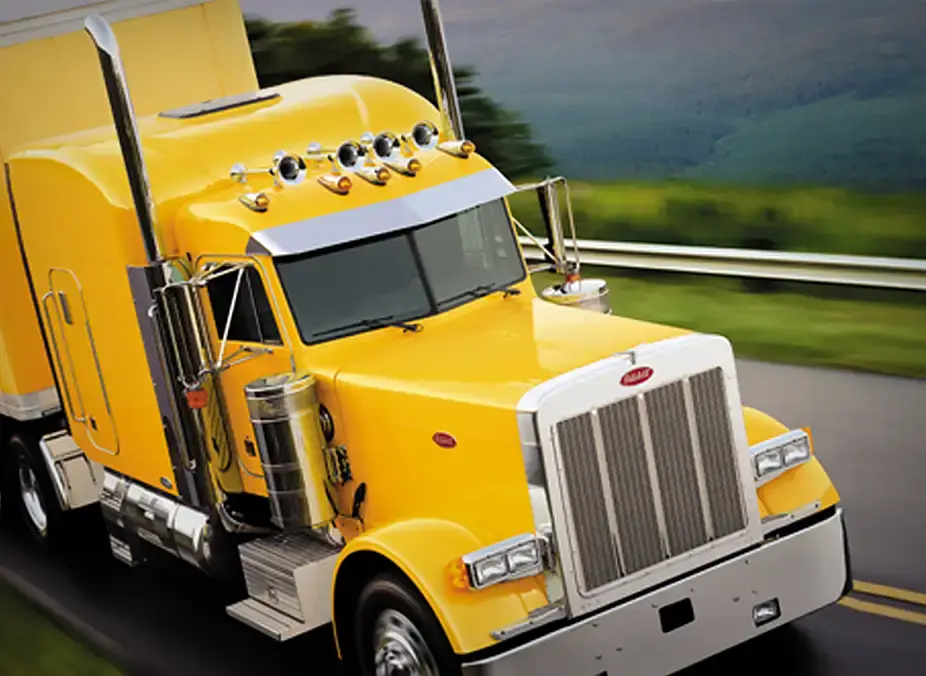
1980s: Entering the Lone Star State
1980 marked the opening of Peterbilt’s new state-of-the-art manufacturing facility in Denton, Texas, that paved the way for revolutionary new designs. To expand its vocational offerings, Peterbilt introduced the Model 349, a lighter-weight highway tractor featuring the first-ever sloped nose on a Peterbilt truck.
Fun Fact: The Class 9 Model 397 was introduced in 1980 as the largest vehicle ever designed by Peterbilt. However, only two units were assembled before it was retired in 1982.
In 1981, the Model 362 became the first completely new COE from Peterbilt in 22 years, setting a new standard for aerodynamic excellence and increasing the popularity of COE tractors. The Model 362 featured a three-piece windshield and three windshield wipers, a larger, more aerodynamic cab and a more functional interior.
1986 was a year of big change as Peterbilt ended operations at its Newark facility and consolidated production to Denton. The company also revised its entire vocational lineup by replacing the Model 348 and Model 349 with the Model 378 and replacing the Model 353 with the Model 357. Peterbilt also began offering a raised-roof sleeper cab as an option for the Model 359 for the first time.
In 1987, Peterbilt launched two new conventional highway tractors. The Model 377 featured a sloped hood, a standard set-back front axle and a wraparound front bumper integrated with the front fenders. The Model 379 replaced the long-running Model 359 as the standard Class 8 highway tractor and later became the most popular owner-operated truck of all time. The Model 379 was distinguished by its headlamp cluster, iconic long, square nose and aluminum hood. The Model 320 was also introduced in the same year as the first Peterbilt truck to allow the driver to operate in a standing position.
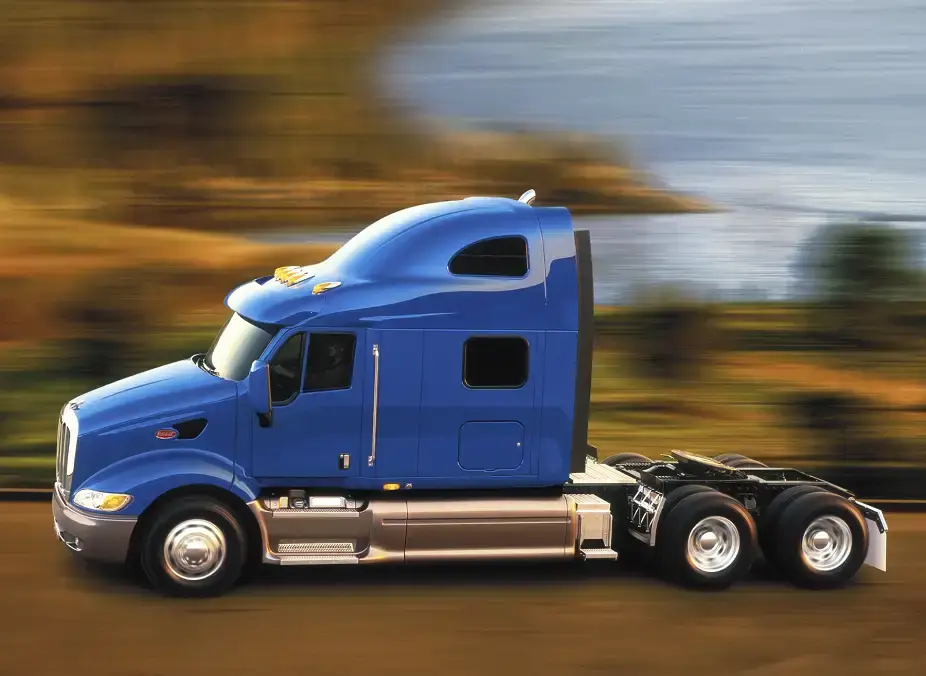
1990s: Continued Growth
Peterbilt relocated its corporate and engineering headquarters to Denton and expanded production at its Denton plant in 1993. One year later, in 1994, the Unbilt sleeper debuted with air-ride suspension for the cab and sleeper.
In 1997, the Model 385 was introduced as a shorter-length version of the Model 377. Following PACCAR’s acquisition of Dutch manufacturer DAF in 1998, Peterbilt introduced the medium-duty low cab forward Model 210 and Model 220 COEs derived from the DAF LF.
In 1999, a new Model 387 was introduced to replace the Model 377. Completely unrelated to the Model 387 in production from 1976 to 1987, the new model was an aerodynamically enhanced highway tractor that shared its cab structure with the Kenworth T2000.
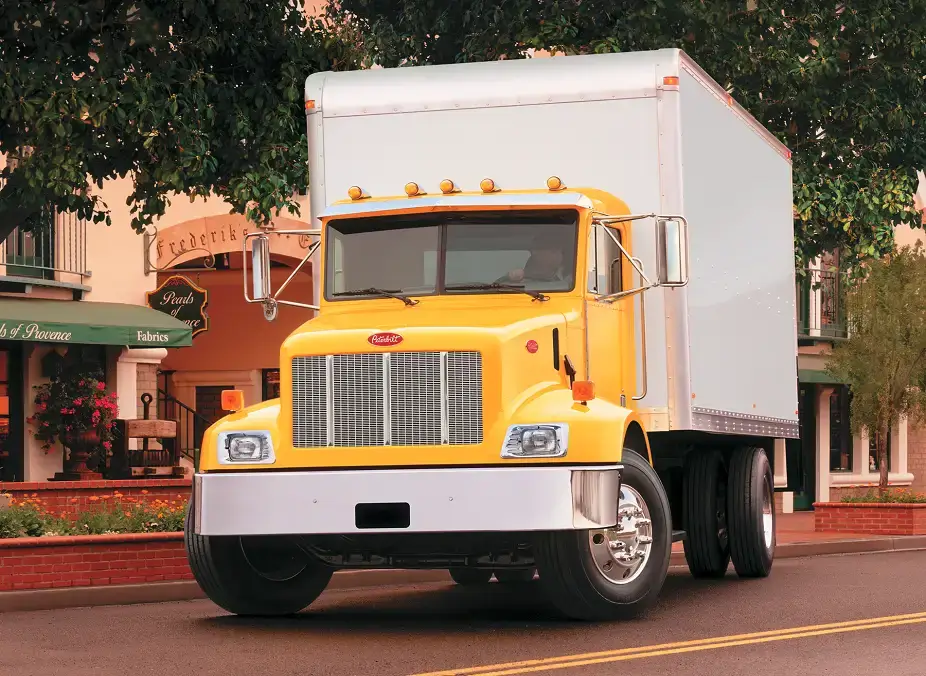
2000s: Moving into Medium-Duty
In 2000, Peterbilt made an impressive entrance into the medium-duty truck market with the launch of the Model 330, its first medium-duty conventional cab truck. Manufactured at a newly rebuilt facility in Sainte-Thérèse, the Model 330 paired the “1100-Series” cab found on the Class 8 conventionals with an all-new hood with integrated twin headlamps.
The new Model 386 introduced in 2005 combined the aerodynamic hood of the Model 387 with the traditional “1100-Series” cab. Peterbilt’s second medium-duty conventional truck, the Model 335, debuted in the same year, featuring a scaled-down version of the hood on the Model 386.
Fun Fact: The Model 386 was the first Peterbilt truck to be designated as environmentally friendly and fuel-efficient by the Environmental Protection Agency (EPA).
2006 was a busy production year for Peterbilt. The company expanded its medium-duty product line with the Class 7 Model 340 and the Class 5 Model 325, its smallest-ever conventional truck. The Model 330 and Model 335 hybrids were also introduced in 2006 as Peterbilt’s first diesel-electric hybrid vehicles. The Model 365 and Model 367 also made their debut as heavy-duty Class 8 trucks with available vocational configurations.
In 2007, the Model 210 and Model 220 were retired after second-party equipment manufacturers found it difficult to adapt to its DAF-based design. And after 20 years, the Model 379 was retired in 2007 and replaced with the Model 389. The new Model 389 featured the longest-ever hood for a Peterbilt conventional truck, upgraded headlamps and aerodynamic improvements.
Peterbilt ended production in Madison, Tennessee, and consolidated all operations to Denton and Sainte-Thérèse in 2009. That same year, Peterbilt made improvements to its medium-duty line by replacing the Model 335 and Model 340 with the Model 337 and Model 348 and adopting the use of Cummins-built PACCAR engines.
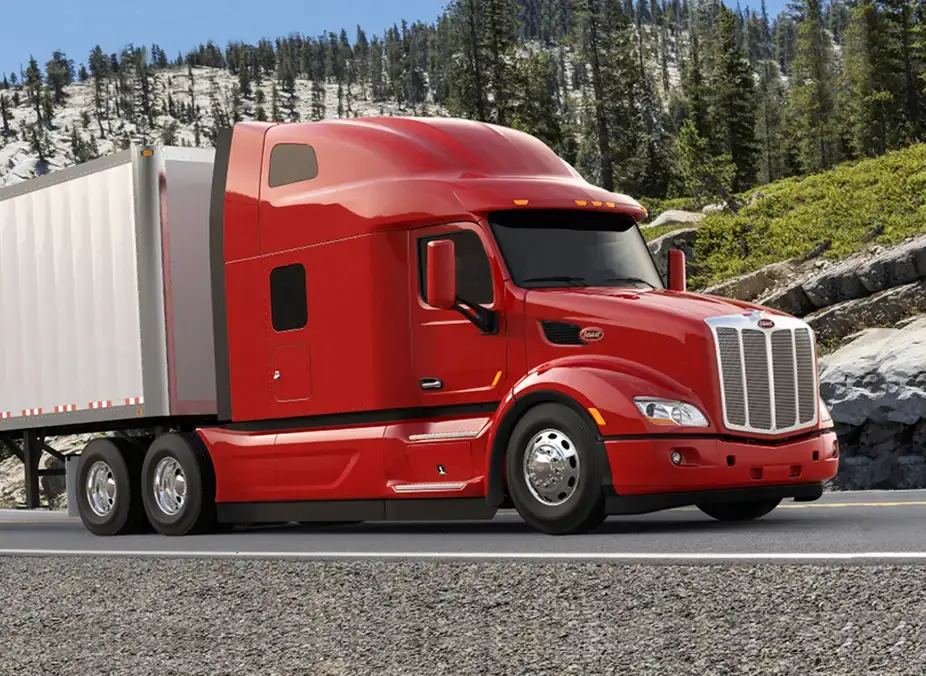
2010s: Ushering in the Modern Era
The 2010s opened with the introduction of the Model 587 as an integrated cab-sleeper aerodynamic tractor to replace the Model 387. The first Peterbilt with a model number starting with 5, the Model 587 offered improved aerodynamics, forward visibility and lighting. The regional haul day cab Model 382 was also unveiled as a shorter and lighter version of the Model 386 and Model 384.
Fun Fact: The Model 587 was the first in the trucking industry to come standard with air disc brakes.
The Model 210 and Model 220 COEs made their return to the Peterbilt lineup in 2011, now sharing the same chassis as the Model 325 and Model 330 to allow for increased component commonality and simpler equipment sourcing. Also in 2011, Peterbilt introduced its Extended Ultra Day Cab with options for a raised roof and extended rear cab wall.
In 2012, the Model 579, nicknamed the “Class of the Highway Market,” was introduced, serving as Peterbilt’s flagship model alongside the Model 359. The Model 379 also debuted an all-new cab design with enhanced outward visibility and improved aerodynamics and serviceability.
The Class 8 Model 567 was introduced in 2013, featuring the newer cab design of the Model 579 paired with a set-back front axle. In 2014, the Model 210 was retired, while the Class 7 Model 220 underwent a redesign to incorporate a Peterbilt cab and drivetrain.
In 2015, Peterbilt introduced its first-ever compressed natural gas fuel options for its medium-duty Model 337 and Model 348. And in 2016, the Model 520 replaced the Model 320 after 29 years in production. The Model 520 featured upgraded refuse-collection functionality, allowing drivers to operate the vehicle sitting or standing from either side of the cab.
In 2018, an UltraLoft Sleeper option was added for the Model 579, offering the ultimate driving, living and working environment. Peterbilt also began testing its first all-electric vehicle prototypes in the same year.
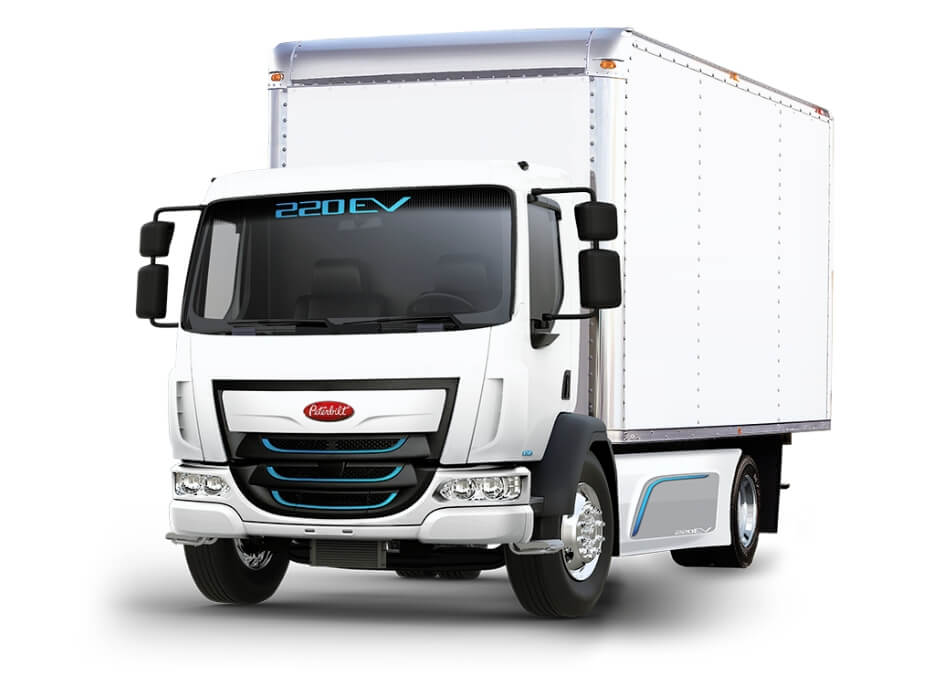
Peterbilt Today: Looking Toward the Future
In 2021, Peterbilt began production of its three all-electric models, the Class 8 Model 579EV tractor, Class 8 Model 520EV COE and Class 7 Model 220EV COE.
That same year, the company initiated a complete overhaul of its medium-duty model line by discontinuing the Model 325, Model 330, Model 337 and Model 348. The new Class 5–7 Model 535, Model 536, Model 537 and Model 548 adopted the larger cabs of the Model 567 and Model 579 as well as newly rebranded PACCAR drivetrains and suspension components.
In May 2023, Peterbilt unveiled the new Model 589 that replaced the iconic Model 389 after almost 20 years of production. The new Class 8 Model 589 features the same long-nose hood and chassis as the Model 389 with an upgraded cab and chassis, improved aerodynamics and better fuel mileage to meet EPA standards.
Peterbilt continues to be a leader of purposeful innovation in the trucking industry and a champion of enduring craftsmanship with a complete lineup of diesel, natural gas and electric vehicles. In November 2023, it celebrated the production of the 750,000th truck, a Model 579, assembled at its Denton facility since it opened in 1980.
Peterbilt Trucks Available at Rush Truck Centers
Rush Truck Centers offers the complete lineup of Peterbilt truck models at our Peterbilt dealerships across the country, currently operating 56 full-service Peterbilt dealerships in 12 states. We also have 71 locations certified to service and sell parts for Peterbilt trucks.
View our available Peterbilt inventory or find a Peterbilt dealership near you, where our truck sales experts can help you find the right Peterbilt truck to fit your business needs.
Search Inventory Find a Dealership
COME ALONG FOR THE RIDE. Sign up to receive email updates with our latest promotions, blog posts and news from Rush Truck Centers.

 Back To Blog
Back To Blog



